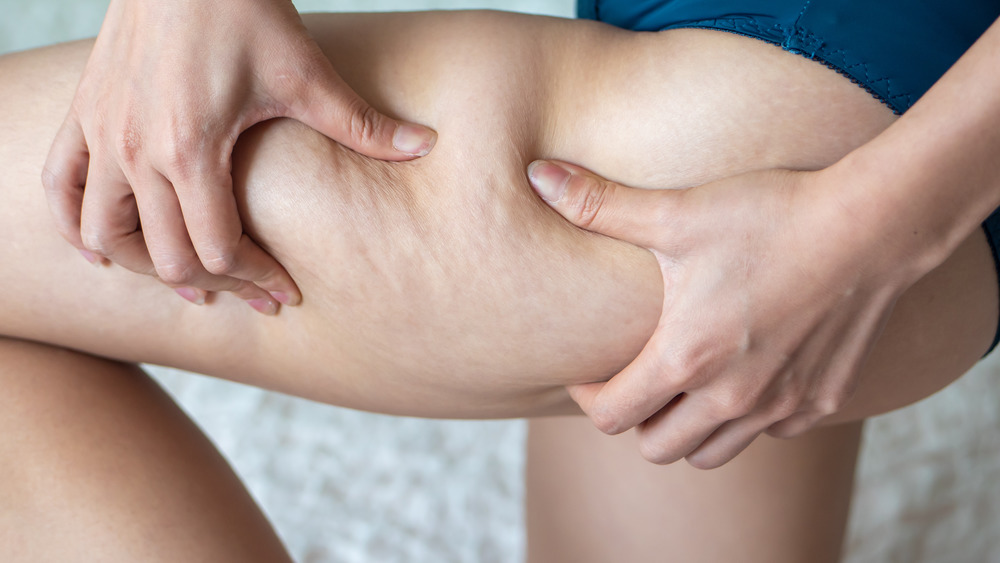Where Does Cellulite Come From?
Cellulite is a common and completely normal skin condition that causes dimpled skin typically on the thighs, buttocks, hips, and stomach (via Mayo Clinic). It is not a medical condition and completely harmless. Cellulite is much more common in women, though some men have it, too. Most females develop some cellulite after puberty, but it is more common as a person gets older when skin loses elasticity.
The lumpy or dimpled appearance of the skin that comes with cellulite is caused by the irregular tightening of the fibrous bands that connect the skin to the underlying muscle, according to the Cleveland Clinic. While this tightening pulls down on the skin, fat cells accumulate and push upward, creating an uneven or puckering appearance. Genetics, hormonal levels, the amount of fat on the body, muscle tone, and thickness and texture of the skin can also affect how much cellulite a person has. Being overweight will often make cellulite more pronounced, but it is not uncommon for lean women to have cellulite.
How can cellulite be treated?
There's no medical reason to treat cellulite. Still, cellulite might affect some people's confidence and self-esteem, and they may want to get rid of it. Weight loss, replacing fat with muscle, and maintaining a healthy weight can reduce the amount of cellulite a person sees, according to the American Academy of Dermatology (AAD). However, sometimes weight loss can lead to loose skin, which can cause cellulite to become more apparent.
Other treatments for cellulite include acoustic wave therapy, laser, and radiofrequency treatments, and certain medical procedures performed by a doctor that involve the use of needles or small blades to break up the tough bands beneath the skin that cause cellulite. All of these treatments can have side effects so be sure to discuss them with your doctor and make sure the healthcare provider administering the treatment is specially trained in the technique. Creams and lotions containing caffeine or 0.3 percent retinol may also have some effect on the appearance of cellulite, according to the AAD, though to see results these products would need to be used daily for months at a time or possibly longer.


